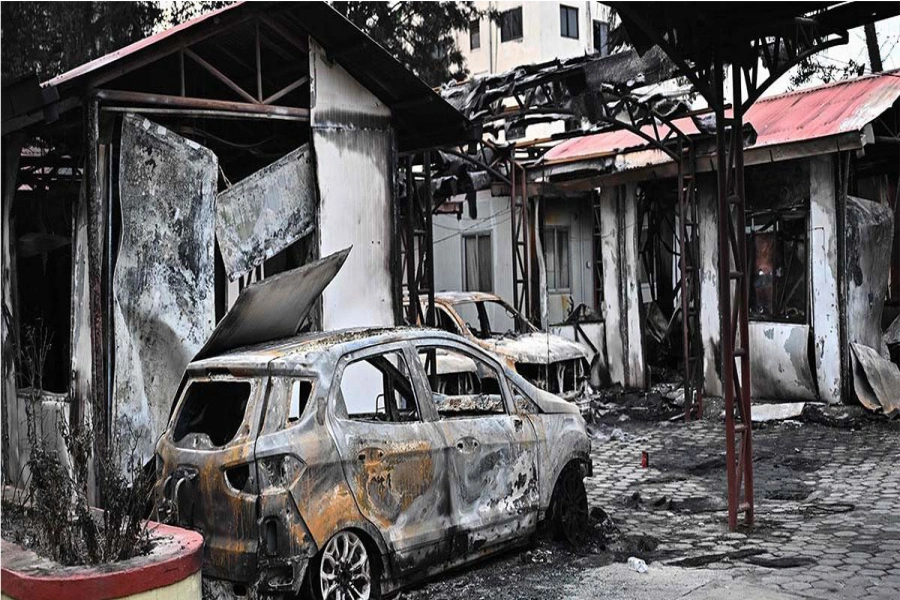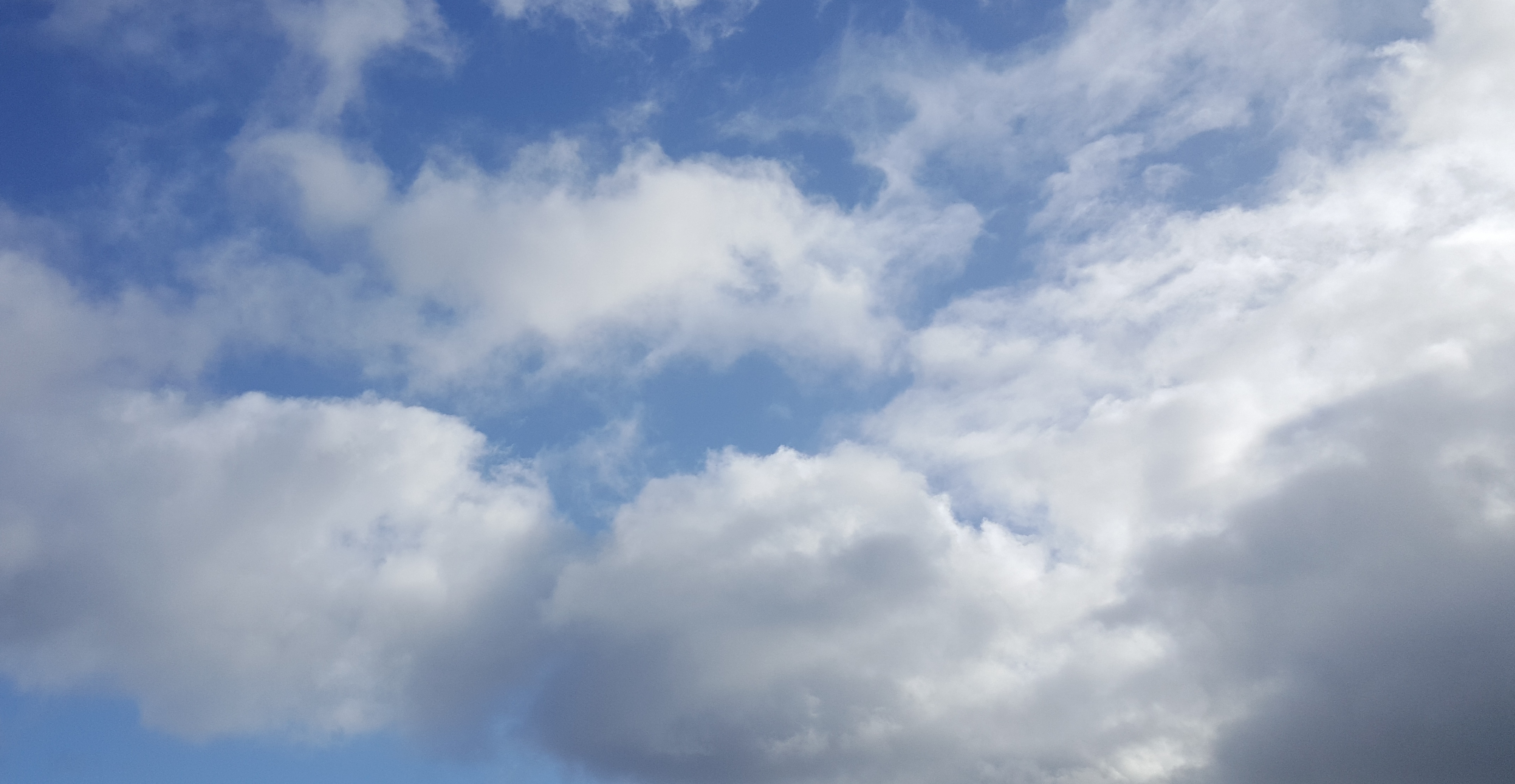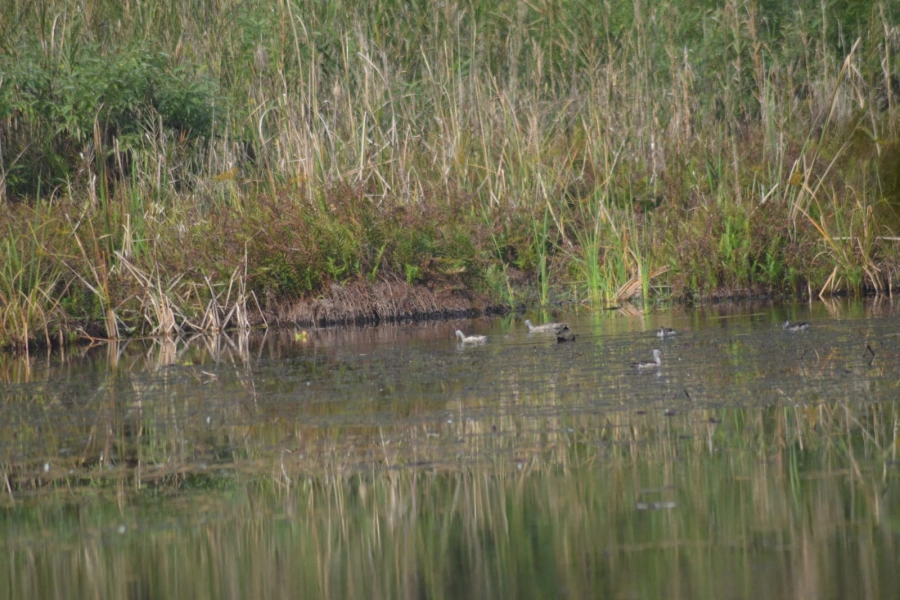Yes indeed, clouds do add colors to the sunset sky. They look beautiful. Have you ever watched the sunset sky full of clouds? I agree fully with Rabindranath Tagore. There is a constant drama going on there. [break]It’s all up to your imagination to make the drama as entertaining as possible. When I was in college, one of my hobbies was to watch clouds move and form different shapes. I found it tranquil and peaceful, especially the "cumulonimbus", the highest-flying clouds around.
I see a few funny faces. You’re thinking, “Wow, I didn’t know clouds have names.” Well, yes, there are different kinds of clouds, and each of them has a name. “Oh, even the wispy clouds?” someone is asking. Yes, even with the wispy ones. They are called Cirrus clouds: thin, wispy high clouds blown by high winds into long streamers. The low clouds are called Stratus clouds. The low cloud group consists of Stratus, Stratocumulus, and Nimbostratus clouds. Middle-level clouds are Altocumulus and Altostratus.

When you go up in the mountains or on an airplane, you’ll be above the clouds. The best place I liked was the site at Bandipur, in Tanahun, where I was actually above the clouds.
By the way, how many of you know what clouds are made of? Oh, you can only guess but are not sure? In that case, I’ll tell you just a bit, and the rest you’re supposed to ask your teachers. Clouds are made of air and water or ice. In summer, it brings rains, and in winter, it brings snow.
I know most of you are thinking, “So how does it actually happen?” In fact, when winds pick up water from the oceans, seas, rivers and lands on earth, it’s carried up into the sky in the form of vapor, which is the gaseous form of water. I’m pretty sure all of you know that, right? No? Look at the inside of the cover of the container with steaming, hot daal, and you will see drops of water there. That’s called condensed vapor.
I hear more questions: “Why some clouds are white and some grey?” Oh wow!! Your curiosity sure is picking up.
When a large number of water drops get together in the clouds, most of the sunlight that hits the cloud is reflected of the water or the ice, and what we see is white clouds. When the cloud is very thick, the water drops present there scatter the light instead of reflecting it, and hence it looks grey or black. Now, you must be wondering, “Where is the clouds formed?”
Clouds can form at any height above the ground. Sometimes, they are almost touching the earth, and this is called fog. Surprised? You never thought of clouds in that way? Nor did I when I was your age. Anyway, when the cloud looks like a huge gray blanket that hangs low in the sky, it’s the Nimbostratus clouds that bring rain if it’s warm. And snow if it’s cold.
I see some puzzled faces. You’re wondering, “What exactly this ‘nimbo’ thing is?” Don’t fret. I’ll tell you about it.
Nimbus is a Latin word, meaning cloud or rainstorm. Nimbus cloud is really just a cloud that already has rain or snow falling out of it. The prefix nimbo- or the suffix -nimbus indicates a precipitating cloud. For example, a nimbostratus cloud is a precipitating stratus cloud, and a cumulonimbus cloud is a precipitating cumulus cloud. "Cumulus" in Latin means the same as the word "accumulate" in English means: ‘to pile up.’
These are puffy clouds, sometimes resembling pieces of floating cotton balls. Cumulus clouds have sharp outlines and a flat base. They belong to the Clouds with Vertical Growth group which develop because of warm air rising from the surface. These are very interesting clouds.
Sometimes they are white, and only a few are seen in the sky. At other times, they can be heavy and gray. When these clouds pile up on top of each other, resembling the head of a cauliflower, it is called towering cumulus. As they grow upward, they can develop into giant cumulonimbus cloud, which is a thunderstorm cloud.
Thunderstorms, as you know, are accompanied by lightning and thunder. Now, the lightning present in all thunderstorms is an electrical discharge produced during the process of balancing the difference between positive and negative charges within a cloud, between two clouds, or between a cloud and the ground. Thunder is an explosion of noise heard when atmospheric gases are suddenly heated by a discharge of lightning. Although both occur at the same time, we see the lighting first and only then hear the thunder. That is because light travels faster than sound.
Now that you know all about clouds, enjoy watching their drama, because different clouds form under different circumstances.
(Usha Pokharel is an educationist, consultant and author of several children’s books. She can be reached at usha@pokharel.net.)
Memory of Rose






































